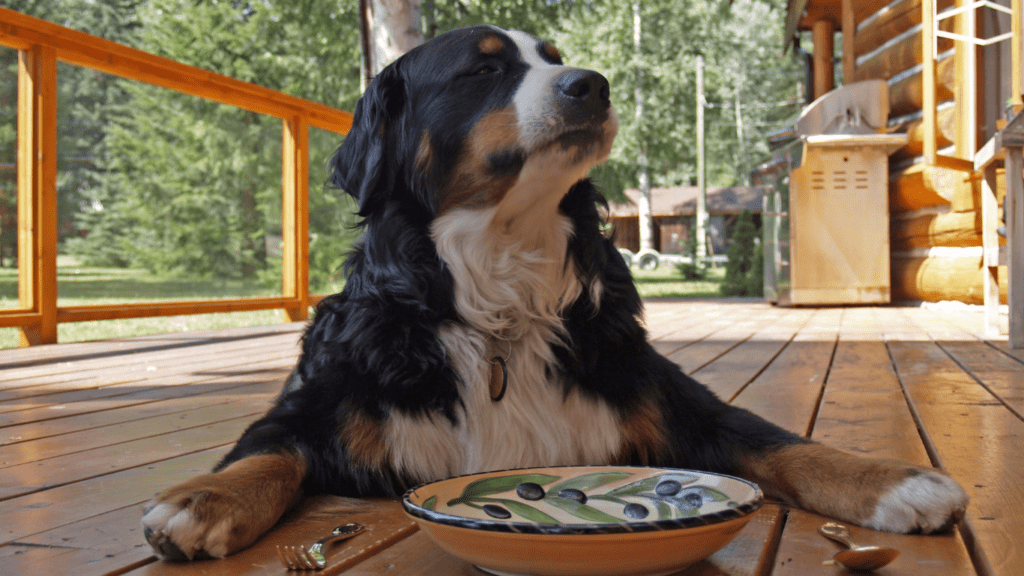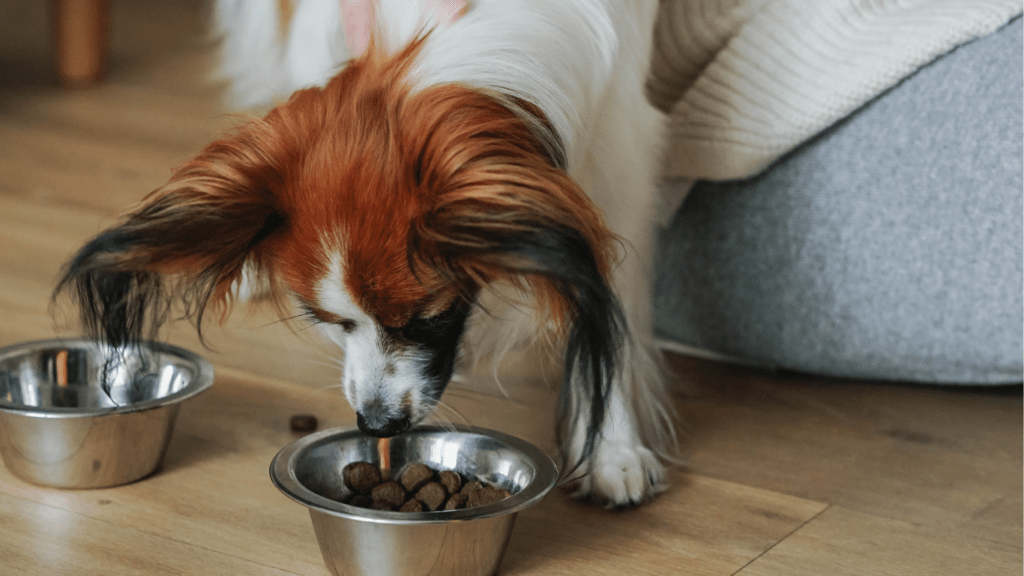Understanding Balanced Pet Nutrition
Balanced pet nutrition involves providing your pet with the right proportions of nutrients they need for growth, energy, and overall health. Each pet species has unique dietary requirements based on factors like:
- age
- breed
- size
- activity level
Meeting these needs enhances their well-being and longevity.
Key Nutrient Categories
Pets require six essential nutrient categories. These categories include carbohydrates, proteins, fats, vitamins, minerals, and water. Each plays a critical role in different biological functions.
- Proteins: Build and repair tissues, support immune function. Example: Chicken, fish.
- Carbohydrates: Provide energy. Example: Rice, potatoes.
- Fats: Supply energy, aid in nutrient absorption. Example: Fish oil, flaxseed.
- Vitamins: Regulate metabolic processes. Example: Vitamin A, Vitamin D.
- Minerals: Support bone health and metabolic processes. Example: Calcium, phosphorus.
- Water: Essential for hydration, digestion.
Importance of Portion Control
Providing the right portion is vital to avoid obesity or nutrient deficiencies. Most pet food packaging includes feeding guidelines, but consulting with a vet ensures precise portions based on individual needs.
Role of Quality Ingredients
High-quality ingredients often mean higher nutritional value. Avoid foods with fillers, artificial preservatives, or by-products, which might lack essential nutrients. Opt for recognized brands with transparent ingredient sourcing.
Special Dietary Needs
Pets with specific health conditions, like diabetes or allergies, require tailored diets. Veterinarians can recommend specialized foods and supplements to meet these needs, ensuring optimal health.
Monitoring and Adapting Diets
Regularly monitor your pet’s weight, coat condition, and energy levels. Adjust their diet if you notice changes in these areas, and consult with a vet to ensure their nutritional needs remain balanced.
Balanced pet nutrition requires careful consideration of several factors to ensure pets live healthy, active lives.
Essential Nutrients for Pets
Balanced pet nutrition hinges on the right mix of essential nutrients. Each category serves a specific purpose in maintaining pets’ health.
Proteins
Proteins are fundamental for pets’ growth and tissue repair. They’re made up of amino acids, which are necessary for enzymes, hormones, and immune function. Pets can get proteins from both animal sources (e.g., chicken, beef) and plant sources (e.g., soy, lentils). The quality and digestibility of proteins matter; high-quality proteins ensure pets absorb maximum nutrients.
Carbohydrates
Carbohydrates provide energy and aid gastrointestinal health. They come from grains (e.g., rice, oats) and vegetables (e.g., peas, sweet potatoes). While not essential, carbs in moderation offer fiber, which benefits digestion. Complex carbohydrates are preferable to simple ones because they release energy gradually, helping maintain steady glucose levels.
Fats
Fats supply concentrated energy and promote healthy skin and coat. Essential fatty acids like omega-3 and omega-6 play roles in inflammation control and cell structure. Sources include fish oil, flaxseed oil, and animal fat. Adequate fats support cognitive function and heart health, making them key to balanced diets.
Vitamins and Minerals
Vitamins and minerals are crucial for metabolic processes, bone health, and immune support. Vitamins A, D, E, and K are fat-soluble, meaning pets store them in their fat tissue, while B-complex and C are water-soluble and need regular replenishment. Minerals like calcium, phosphorus, and potassium maintain structural integrity and fluid balance. Each nutrient works in coordination to ensure pets’ systems function optimally.
Balanced diets incorporating these essential nutrients contribute significantly to pets’ overall wellness and longevity.
Choosing the Right Pet Food

Selecting the right pet food ensures your pet gets balanced nutrition for optimal health. Here’s a closer look at commercial pet foods and homemade pet diets.
Commercial Pet Foods
Commercial pet foods offer convenience and balance. Manufacturers formulate these products to meet pets’ nutritional requirements based on established guidelines like AAFCO (Association of American Feed Control Officials). This ensures pets receive vital nutrients in appropriate ratios. High-quality brands also undergo rigorous testing, adding reliability.
Examples of commercial pet foods include kibble, wet food, and semi-moist options. Kibble is cost-effective and helps maintain dental health. Wet food offers higher moisture content, beneficial for pets prone to urinary issues. Semi-moist options combine benefits but often contain more preservatives.
Homemade Pet Diets
Homemade pet diets give more control over ingredients and preparation. This lets owners tailor meals to pets’ specific needs, addressing allergies or sensitivities. It’s easier to include fresh, high-quality ingredients without additives or preservatives.
Prepare balanced homemade diets by consulting a veterinary nutritionist. They ensure meals include necessary nutrients and offer appropriate portion sizes. Protein sources like chicken or fish, vegetables like carrots and peas, and grains like rice or oats can create wholesome meals.
Choose the right pet food by considering factors like convenience, nutritional balance, and specific health needs. Both commercial pet foods and homemade diets have their own advantages in providing balanced nutrition for pets.
Portion Control and Feeding Schedules
Maintaining balance in a pet’s diet involves more than just ingredients. Proper portion control and feeding schedules are crucial for optimal health.
Importance of Portion Control
Portion control prevents overfeeding or underfeeding. Overfeeding can cause obesity, leading to health issues like diabetes and joint problems, while underfeeding deprives pets of essential nutrients. Use a digital scale for accuracy and refer to the pet food packaging for serving sizes aligned with specific weight and age. Monitor weight regularly and adjust portions as necessary. Consult a vet to tailor portions for pets with unique health conditions or dietary needs.
Establishing a Feeding Schedule
A consistent feeding schedule supports digestive health. Feed pets at the same times each day to regulate metabolism and prevent overeating. For most dogs, feeding twice daily works well: morning and evening. Cats often prefer smaller, more frequent meals; try three to four feedings daily. Keep a feeding log initially to note any digestive issues or changes in appetite. Avoid free-feeding, as it promotes weight gain and disrupts natural hunger cues. Coordinate the schedule with your daily routine to ensure consistency and adherence.
Special Considerations for Different Pets
Pets have unique dietary needs that vary by species and breed. It’s essential to understand these differences to provide optimal nutrition.
Dogs
Dogs require a balanced diet that includes proteins, fats, carbohydrates, vitamins, and minerals. High-quality protein sources such as chicken, beef, and fish support muscle maintenance. Fats from fish oil or flaxseed are crucial for skin and coat health. Carbohydrates like sweet potatoes and rice provide energy. Dogs can also benefit from vegetables like carrots and spinach for added vitamins and minerals. Consult your vet for breed-specific dietary recommendations.
Cats
Cats are obligate carnivores, meaning they need a high-protein diet. Animal-based proteins like chicken, turkey, and fish should form the bulk of their diet. Taurine, an essential amino acid, must be present to prevent deficiencies. Fats from sources like fish oil support healthy skin and fur. Limited carbohydrates from sources like pumpkin can aid digestion. Ensure that any commercial cat food includes necessary vitamins and minerals to prevent nutritional imbalances.
Other Pets
Small pets like rabbits, guinea pigs, and hamsters have specific dietary needs. Rabbits and guinea pigs require high fiber from hay and fresh vegetables to aid digestion. Guinea pigs also need vitamin C supplements, as they can’t produce their own. Hamsters thrive on a mix of seeds, grains, and vegetable pieces. For birds, a mix of seeds, pellets, and fresh fruits and vegetables ensures balanced nutrition. Always research species-specific dietary requirements and consult an exotic pet veterinarian for tailored advice.
Common Nutrition Mistakes to Avoid
Nutrition is crucial for pets’ overall health, but common mistakes can lead to serious health issues.
Overfeeding
Overfeeding often leads to obesity. Many pet owners don’t measure portions accurately. For instance, guessing instead of using a measuring cup results in overfeeding. Obesity increases the risk of diabetes and joint issues. Avoid feeding table scraps and treats excessively. Pet food packaging often includes recommended serving sizes based on weight and activity level.
Underfeeding
Underfeeding results in malnutrition. Pets need specific calorie and nutrient amounts for their size and activity. Skipping meals or providing insufficient food weakens their immune system and reduces energy levels. Always calculate their daily caloric needs, especially for growing pets, to maintain their ideal weight.



 Founder & Pet Wellness Advocate
As the visionary founder of Pet Paw Shack, Kimberliene Sabinin is passionate about helping pet owners provide the best care possible for their furry companions. With a background in veterinary science and animal nutrition, Kimberliene brings years of experience in promoting pet health, safety, and well-being. Her mission is to empower pet owners with practical knowledge about proper nutrition, behavior training, and overall pet wellness.
Founder & Pet Wellness Advocate
As the visionary founder of Pet Paw Shack, Kimberliene Sabinin is passionate about helping pet owners provide the best care possible for their furry companions. With a background in veterinary science and animal nutrition, Kimberliene brings years of experience in promoting pet health, safety, and well-being. Her mission is to empower pet owners with practical knowledge about proper nutrition, behavior training, and overall pet wellness.
